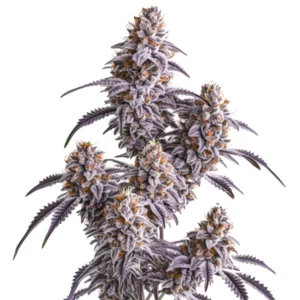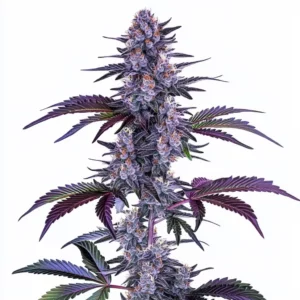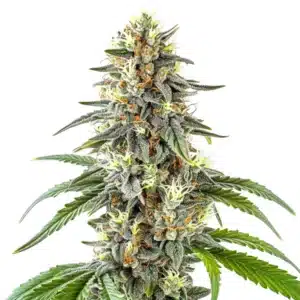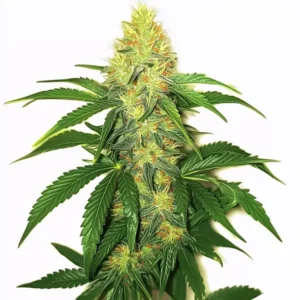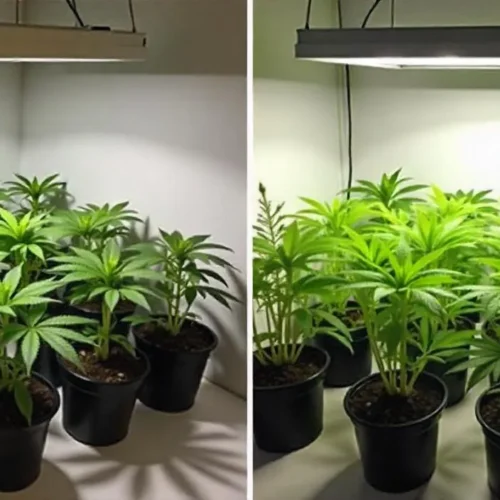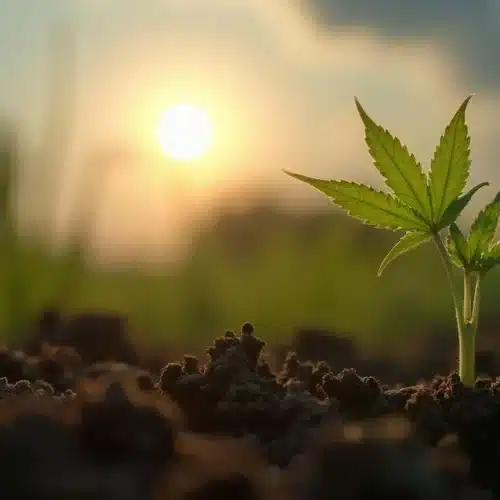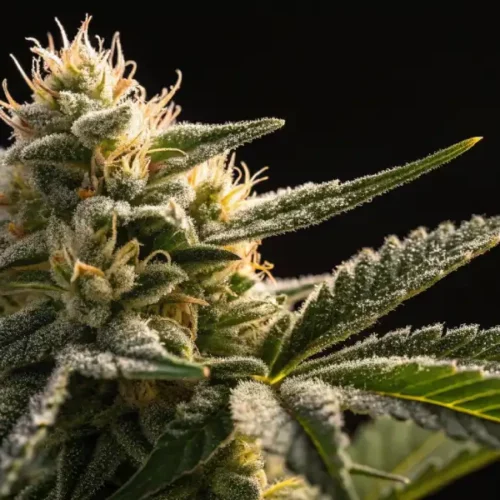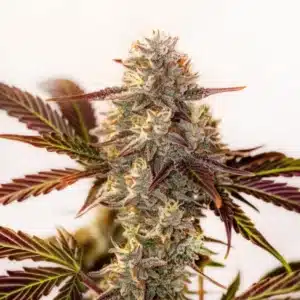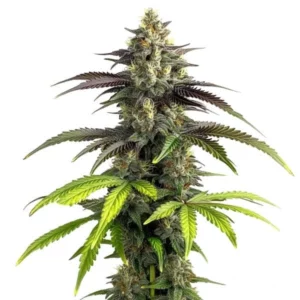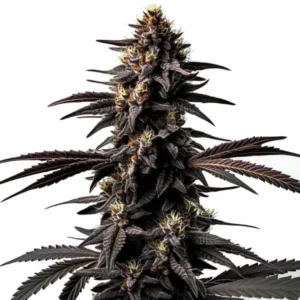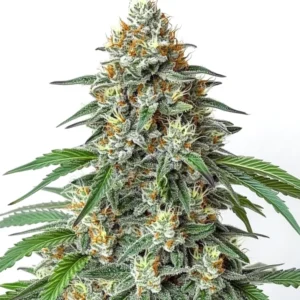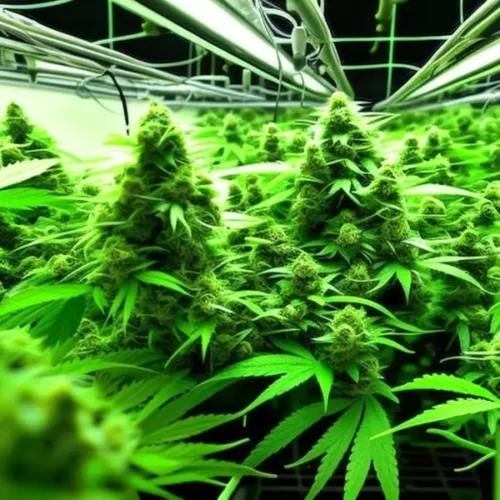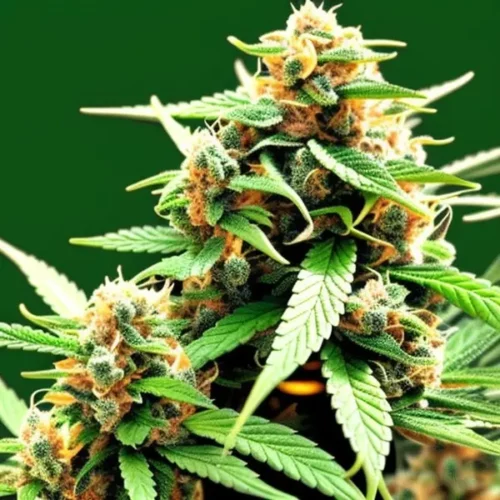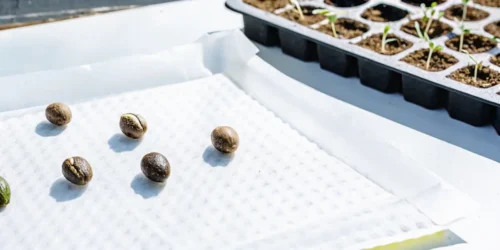Growing cannabis can be a rewarding experience, but the choice between hydroponic vs soil weed cultivation can significantly impact your results. Each method has its unique advantages and challenges, catering to different growing conditions and goals. These differences is crucial for selecting the best approach for your cannabis cultivation. For those considering different seed types, comparing autoflower vs feminized seeds can provide further insights.
Benefits of Hydroponic vs Soil Weed Cultivation
Faster Growth and Higher Yields
One of the main advantages of hydroponics for weed vs soil cultivation is the potential for faster plant growth and higher yields. In a hydroponic system, plants receive nutrients directly through the water, allowing them to grow more quickly and produce more substantial harvests compared to soil-grown cannabis. For growers wondering are hydroponics better than soil, these benefits clearly highlight why many prefer hydroponic setups for maximizing performance and efficiency.
Recommended Strains
24k Gold
 THC: 19% - 22%
THC: 19% - 22% Type of seed: Feminized
Type of seed: Feminized Phenotype: Mostly Indica
Phenotype: Mostly Indica Day to flower: 8 - 10 weeks
Day to flower: 8 - 10 weeks
24k Gold Autoflower
 THC: 18% - 24%
THC: 18% - 24% Type of seed: Autoflowering
Type of seed: Autoflowering Phenotype: Mostly Sativa
Phenotype: Mostly Sativa Day to flower: 8 - 10 weeks
Day to flower: 8 - 10 weeks
Better Control Over Nutrient Intake
Hydroponic systems provide precise control over the nutrients that plants receive. Growers can tailor the nutrient solution to meet the specific needs of their soil vs hydroponics plants, optimizing growth and health. This control reduces the risk of nutrient deficiencies or imbalances, resulting in healthier plants.
Reduced Risk of Pests and Diseases
Since hydroponic systems do not use soil, the risk of soil-borne pests and diseases is significantly lower. This can lead to healthier hydro weed or soil plants and less reliance on pesticides or other treatments, promoting a cleaner growing environment.
Promos & Deals
Challenges of Hydroponic vs Soil Weed Cultivation
Higher Initial Setup Costs
Setting up a hydroponic system for soil vs hydroponics can be more expensive than traditional soil cultivation. The cost of equipment, such as pumps, reservoirs, grow lights, and nutrient solutions, can add up quickly. However, these initial investments can be offset by the increased yields and faster growth rates.
Technical Complexity
Hydroponic systems require a higher level of technical knowledge and maintenance. Growers must monitor and adjust pH levels, nutrient concentrations, and water quality regularly. This can be daunting for beginners, but with practice and education, managing hydro weed or soil becomes more manageable.
Risk of System Failures
In a hydroponic system, plants rely entirely on the equipment to deliver nutrients and water. If a pump fails or a system malfunction occurs, hydroponic vs soil weed plants can suffer quickly. Therefore, maintaining and monitoring the system is crucial to prevent potential failures.
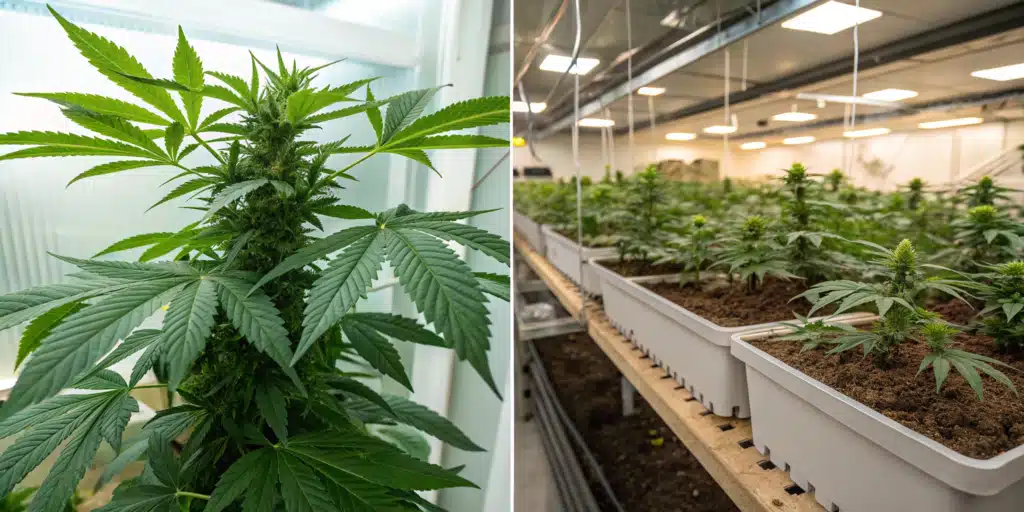
Benefits of Soil-Grown Cannabis Cultivation
Natural Nutrient Supply in Soil
Soil provides a natural source of nutrients, which can benefit the overall health and flavor profile of cannabis plants. High-quality soil contains beneficial microorganisms that help break down organic matter, releasing nutrients for plant uptake, crucial for soil vs hydroponics comparisons.
Easier for Beginners
Soil cultivation is generally easier for beginners due to its simplicity and lower initial setup costs. It requires less technical knowledge, making it an accessible entry point for new growers exploring hydroponic vs soil weed methods.
More Forgiving Environment
Soil acts as a buffer, holding nutrients and water for plants to absorb as needed. This makes it more forgiving than hydroponic systems, where nutrient imbalances can have immediate and severe effects on plant health, a key consideration in hydro weed or soil cultivation.
Challenges of Soil-Grown Cannabis Cultivation
Slower Growth Rates
Plants grown in soil typically have slower growth rates compared to hydroponic systems. Nutrient uptake in soil is less efficient, which can result in longer growing cycles and potentially lower yields, a critical factor in hydroponics for weed Vs Soil decisions.
Increased Risk of Pests and Diseases
Soil can harbor pests, fungi, and bacteria that may harm cannabis plants. Managing these threats requires vigilance and sometimes the use of pesticides or fungicides, which can impact the overall growing environment in hydroponics for weed Vs Soil setups.
Variability in Soil Quality
The quality of soil can vary significantly, affecting plant health and growth. Ensuring the use of high-quality soil and amending it as necessary is essential for optimal results in soil vs hydroponics cultivation.
Hydro Weed vs Regular: Key Differences
When comparing hydro weed vs regular weed grown in soil, several key differences emerge:
Growth Rate and Yield
Hydro weed typically grows faster and produces higher yields compared to regular soil-grown weed. This is due to the direct nutrient delivery system in hydroponics, which enhances growth efficiency.
Flavor and Potency
The controlled environment of hydroponics can result in hydro weed with more consistent flavor and potency. In contrast, regular weed grown in soil may have more variability depending on soil quality and environmental factors.
Maintenance and Expertise
Hydro weed cultivation requires more technical expertise and maintenance, including regular monitoring of pH levels and nutrient solutions. Regular weed grown in soil is generally easier for beginners and requires less precise management.
Optimal Growing Techniques for Hydroponic vs Soil Weed Cultivation
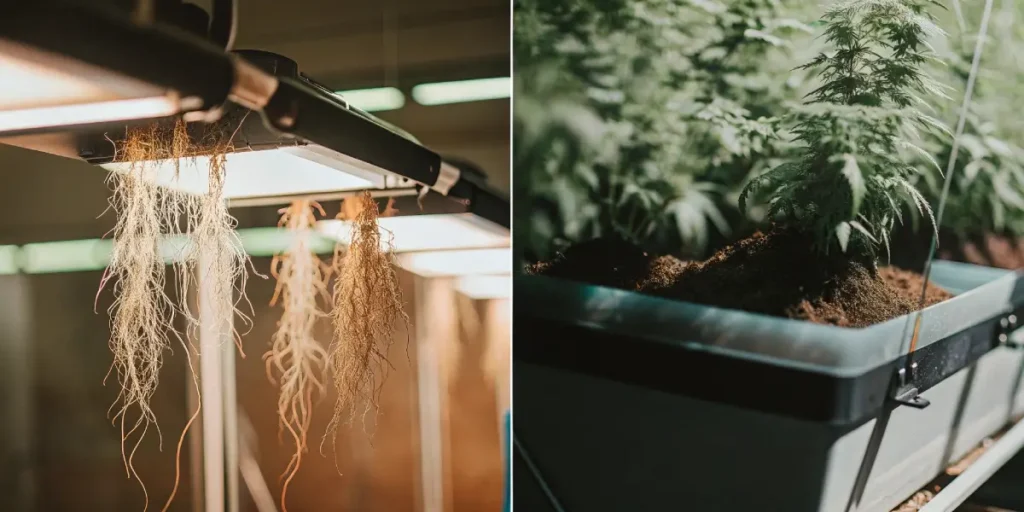
Choosing the Right Hydroponic System
There are several types of hydroponic systems for hydroponic vs soil weed, each with its advantages and suited for different growing conditions:
- Deep Water Culture (DWC): Ideal for beginners, this system involves suspending plant roots in nutrient-rich water.
- Nutrient Film Technique (NFT): This system delivers a thin film of nutrient solution to plant roots, promoting rapid growth in hydro weed or soil setups.
- Drip System: Nutrients are delivered directly to the base of each plant, suitable for larger hydroponic vs soil weed setups.
Selecting the Best Soil and Amendments
For soil-grown cannabis, choosing the right soil and amendments is critical in soil vs hydroponics comparisons:
- Loamy Soil: A balanced mixture of sand, silt, and clay provides excellent drainage and nutrient retention.
- Organic Amendments: Adding compost, worm castings, or bat guano enriches the soil with essential nutrients and improves plant health in hydro weed or soil.
- pH Balance: Maintaining a soil pH between 6.0 and 7.0 ensures optimal nutrient availability for cannabis plants in hydroponic vs soil weed scenarios. For more detailed information, refer to our guide on the best soil for marijuana.
Hydroponic Bud: Characteristics and Advantages
Hydroponic bud refers to cannabis flowers produced in a hydroponic system. These buds often have distinct characteristics:
Enhanced Potency
Hydroponic bud is often more potent due to the precise control over nutrients and growing conditions. This can result in higher concentrations of THC and other cannabinoids.
Improved Flavor and Aroma
The controlled environment in hydroponics allows for fine-tuning of the nutrient profile, leading to hydroponic buds with enhanced flavor and aroma compared to soil-grown cannabis.
Cleaner Product
Hydroponic systems reduce the risk of soil contamination and pest issues, resulting in cleaner, healthier buds free from pesticides and other contaminants.
Other Cannabis Growing Methods
Organic Cannabis Cultivation
Organic cannabis cultivation emphasizes the use of natural materials and processes to grow cannabis plants. This method avoids synthetic fertilizers and pesticides, focusing instead on organic composts, teas, and natural pest control measures. Organic cultivation aims to produce cannabis that is not only high-quality but also environmentally friendly. The resulting product often boasts rich flavors and a cleaner smoke, appealing to consumers seeking a natural alternative.
Aquaponics
Aquaponics combines aquaculture (raising fish) with hydroponics (growing plants without soil) in a symbiotic environment. In this system, fish waste provides an organic nutrient source for the plants, and the plants help to filter and clean the water for the fish. Aquaponics can be an efficient and sustainable way to grow cannabis, as it recycles water and nutrients, reduces the need for chemical fertilizers, and supports a balanced ecosystem. The setup and maintenance can be complex, but the potential benefits make it an intriguing option for innovative growers.
Aeroponics
Aeroponics is a high-tech growing method where cannabis plants are suspended in the air, and their roots are misted with a nutrient-rich solution. This technique allows for maximum oxygen exposure to the roots, promoting rapid growth and high yields. When comparing aeroponic weed vs hydroponic, aeroponics systems tend to be more efficient, using less water and nutrients than traditional hydroponic setups. However, they require precise control and monitoring of environmental conditions, making them more suitable for experienced growers.
Greenhouse Cultivation
Greenhouse cultivation combines elements of indoor and outdoor growing, providing a controlled environment with natural sunlight. Greenhouses allow growers to extend the growing season and protect plants from harsh weather conditions. This method can be more cost-effective than indoor growing, as it reduces the need for artificial lighting and climate control. Greenhouses also offer better pest management compared to outdoor cultivation, making it a popular choice for many commercial growers.
Outdoor Growing
Outdoor growing is the most traditional method of cultivating cannabis, relying on natural sunlight, rain, and soil. This approach can be the most cost-effective and environmentally friendly, as it requires minimal inputs. Outdoor cultivation allows cannabis plants to grow to their full potential, often resulting in larger yields. However, it also exposes plants to the elements, pests, and varying climate conditions, which can affect the quality and consistency of the crop. For growers comparing autoflower hydro vs soil, it’s worth noting that outdoor soil setups offer simplicity and scale, while hydroponic systems—though more complex—are typically reserved for indoor environments where conditions can be controlled.
Vertical Farming
Vertical farming involves growing cannabis plants in stacked layers, often in controlled indoor environments. This method maximizes space efficiency, making it ideal for urban areas or locations with limited floor space. Vertical farming can be combined with hydroponic or aeroponic systems to optimize growth and yield. The initial setup can be expensive and technologically demanding, but the high-density production can lead to significant returns.
Micro-Growing
Micro-growing refers to the cultivation of cannabis in very small spaces, such as closets, cabinets, or tents. This method is suitable for personal growers who have limited space but still want to produce high-quality cannabis. Micro-growing requires careful management of light, temperature, and ventilation to ensure healthy plant development. With the right techniques and equipment, micro-growing can yield impressive results even in confined areas.

FAQs
How do hydroponic systems affect the taste of hydroponic vs soil weed?
Hydroponic systems can produce cannabis with a cleaner, more refined taste. Since the plants receive precise nutrient formulations, the flavors can be more consistent and potent compared to soil-grown soil vs hydroponics.
Is it possible to switch from soil to hydroponic growing in hydroponic vs soil weed?
Yes, it is possible to switch from soil to hydroponic growing in hydro weed or soil. However, it requires a significant change in technique and equipment. Gradual learning and adaptation to hydroponic systems are recommended for a successful transition in hydroponic vs soil weed.
What are the environmental impacts of hydroponic vs soil weed cultivation?
Hydroponic systems can be more water-efficient than soil cultivation, as they recycle water and nutrients. However, they require more energy due to the use of pumps and grow lights. Soil cultivation can have a larger environmental footprint due to the need for pesticides and fertilizers, but it can be more sustainable when using organic practices in hydro weed or soil.
Can I use organic nutrients in hydroponic vs soil weed systems?
Yes, organic nutrients can be used in hydroponic systems in hydro weed or soil. However, they may require additional filtering to prevent clogging in the system. Ensuring compatibility with your hydroponic setup is essential for effective use in hydroponic vs soil weed.
What is the best growing medium for hydroponic vs soil weed?
There are several growing mediums for hydro weed or soil, including rockwool, coco coir, perlite, and clay pellets. Each medium has its pros and cons, and the choice depends on the specific needs of your hydroponic system and plants inhydroponics for weed Vs Soil.
Both hydro weed or soil cultivation methods have their unique advantages and challenges. Hydroponic systems offer faster growth, higher yields, and better control over nutrients, making them ideal for experienced growers with a higher budget. Soil cultivation provides a more forgiving and natural growing environment, suitable for beginners and those with limited resources. These differences and evaluating your specific needs will help you make an informed decision for successful hydroponic vs soil weed cultivation.
By mastering the techniques of hydro weed or soil growing, you can achieve impressive results and enjoy the rewards of cultivating high-quality cannabis.



